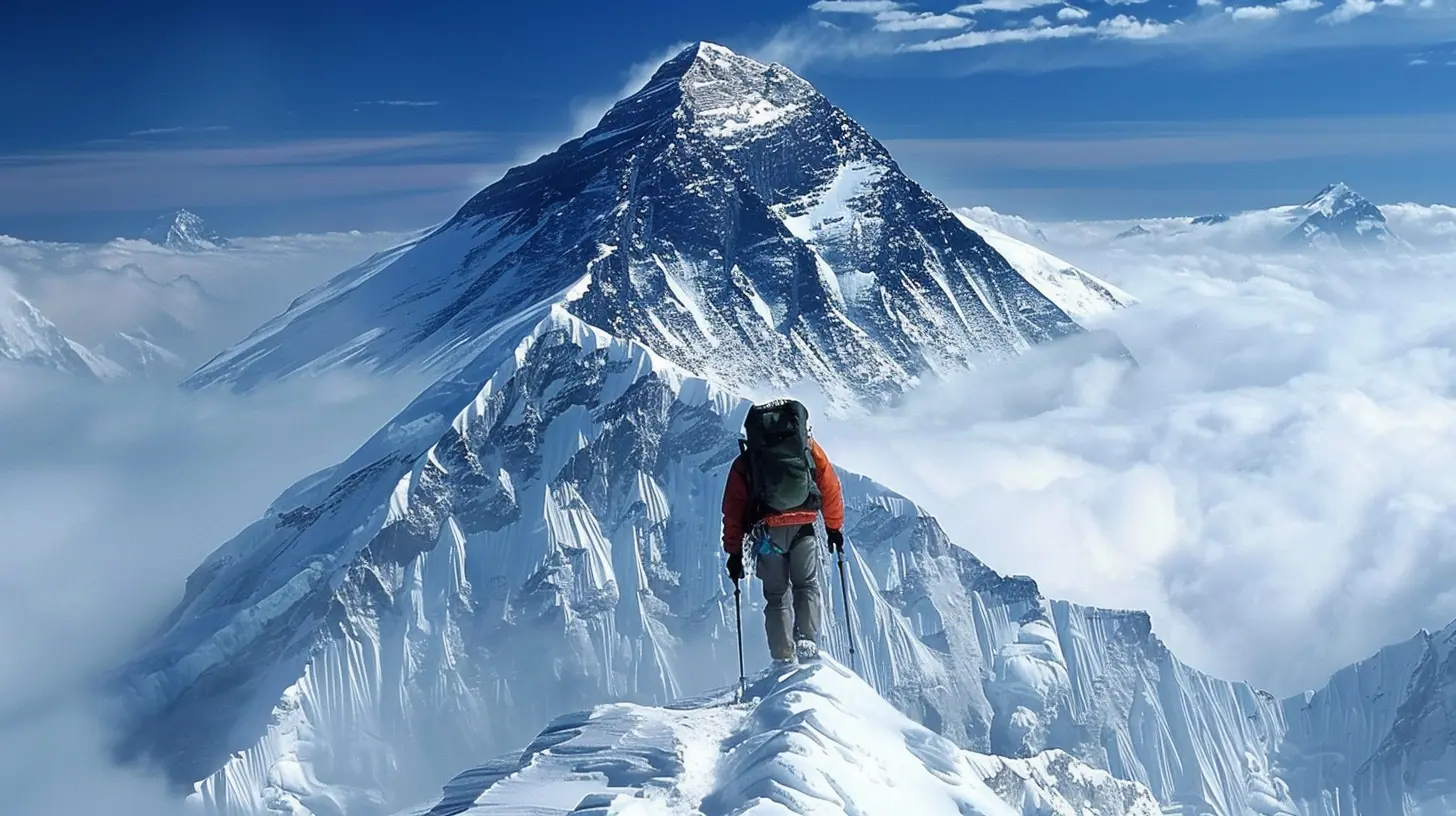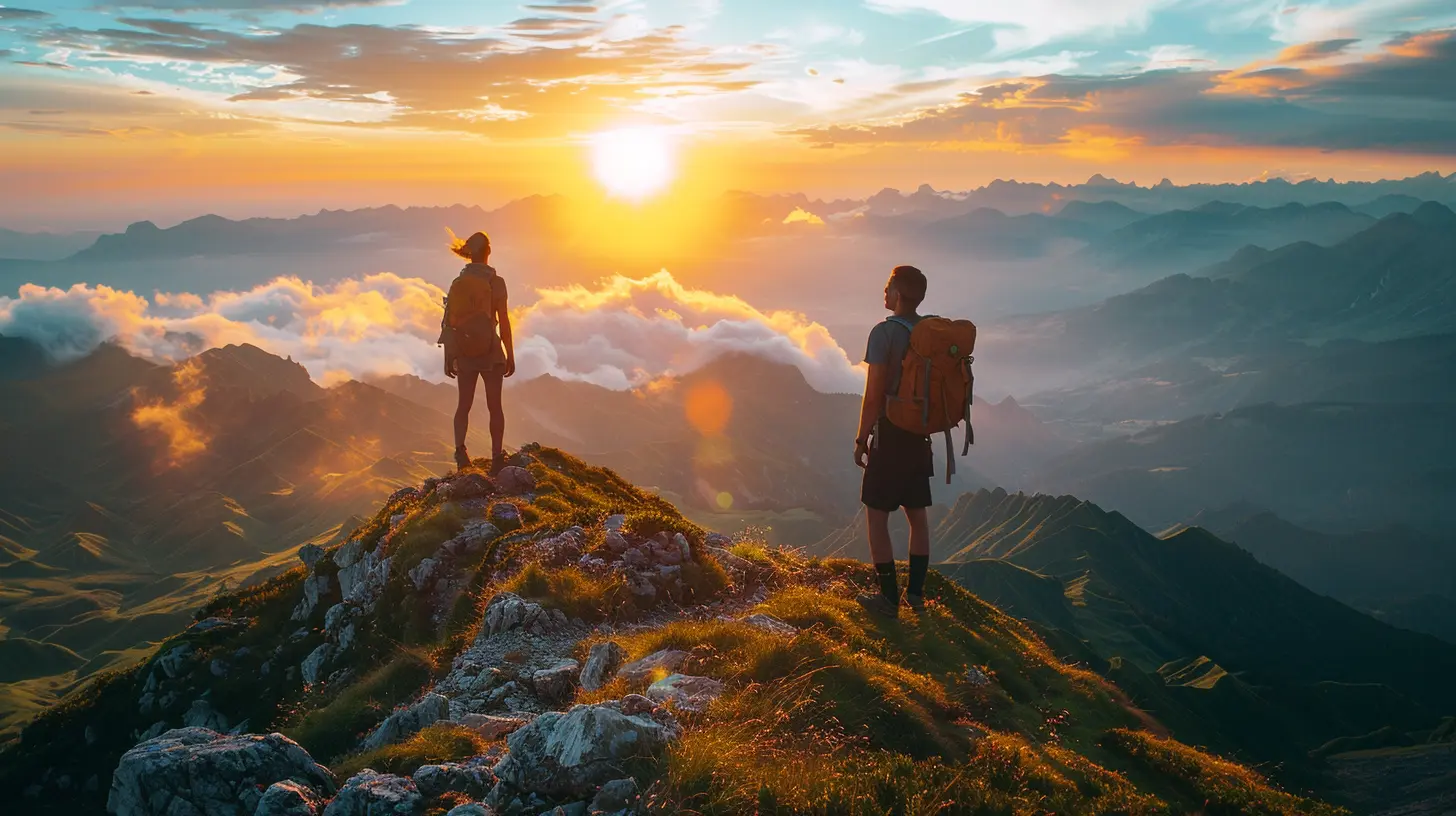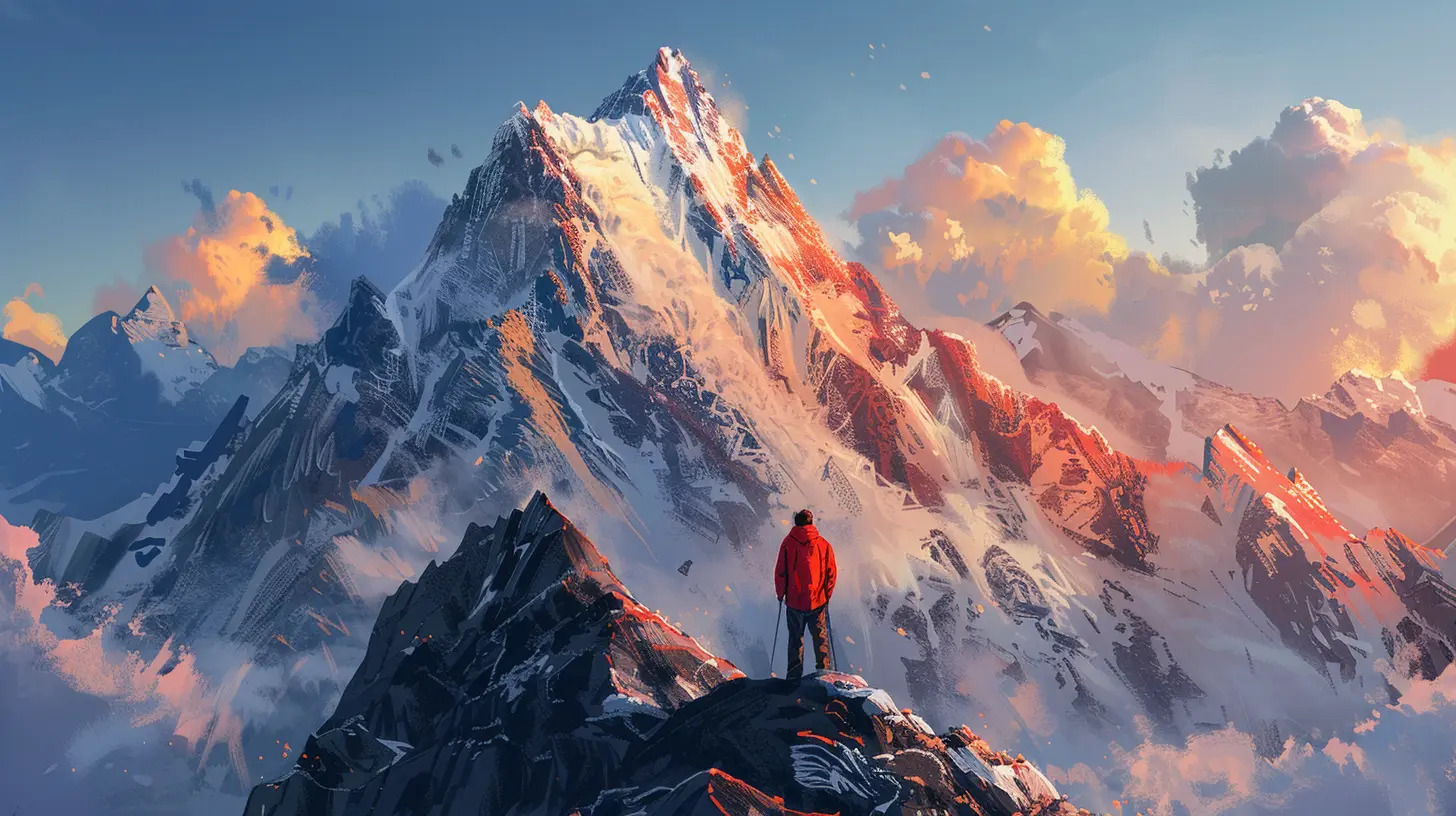Trekking the World's Tallest Mountains, One Step at a Time
3 November 2025
There’s something magical about standing beneath a sky-piercing mountain, your breath catching from both the altitude and the awe of it all. If you've ever felt the tug of the wild or the whisper of adventure in your bones, then trekking the world's tallest mountains might just be your calling.
Let’s be real, though — climbing a mountain isn’t a walk in the park. It’s gritty. It’s tough. It’s often cold, uncomfortable, and puts your spirit and stamina through the wringer. But oh, is it worth it. Every step, every blister, every gasp of thin air — they all lead to something unforgettable.
So buckle up (or rather, lace up your hiking boots), because we’re heading straight into the heart of the world’s sky-high giants — one step at a time.
Why We’re Obsessed With Big Mountains
Let’s face it. Humans have always been a little obsessed with conquering the impossible. From space travel to deep-sea diving to, yep, climbing mountains that practically kiss the heavens — we like a good challenge.But trekking, as opposed to technical climbing, is a beautiful middle ground. You don’t need to be a pro climber. You don’t need to carry ropes or dangle off cliffs. You just need determination, solid prep, and a love for the great outdoors.
And when it comes to trekking the tallest mountains in the world? It's about more than just physical endurance — it’s about headspace, heart space, and yes, the occasional lung-burning struggle.
The World’s Highest – But Not Always the Hardest
When we talk about the tallest mountains, most people immediately think of Everest. And sure, it’s up there — literally. But did you know you don’t actually have to summit Everest to have a life-changing mountain trek?Let’s walk through some of the world’s tallest — and most awe-inspiring — mountains that offer epic trekking experiences.
1. Mount Everest Base Camp (Nepal) – The King of Treks
Sure, summiting Everest is only for the elite few with deep pockets and tons of time. But for most of us, trekking to Everest Base Camp is a bucket-list adventure that’s totally doable.Why it’s awesome:
You're walking in the shadows of legends. The Himalayas are massive, humbling, and jaw-droppingly beautiful. The journey through Sherpa villages, Buddhist monasteries, and the surreal Khumbu Glacier is like moving through a living postcard.
Altitude: 5,364 meters (17,598 ft)
Challenge: Moderate to Hard — high altitude is no joke here, but with proper acclimatization, it’s achievable.
Pro Tip: Don’t rush. Your body needs time to adjust. And for the love of yak cheese — hydrate!
2. Aconcagua (Argentina) – The Andean Beast
South America’s highest peak and the tallest outside of Asia, Aconcagua is a monster. But here’s the kicker: it’s technically non-technical. That means you don’t need ropes or climbing gear unless you’re going through certain routes.Why it’s awesome:
It’s a massive, snow-covered giant in the heart of Argentina’s Andes. Imagine deserts, glaciers, and some of the most dramatic mountain scenery all rolled into one trek.
Altitude: 6,961 meters (22,838 ft)
Challenge: Hard — While not technically difficult, the altitude and crazy weather make it a tough nut to crack.
Pro Tip: Go with a guide unless you’re super experienced. Weather can flip on you quickly at this altitude.
3. Kilimanjaro (Tanzania) – Africa’s Roof
Ah, the famed Kilimanjaro! It might not be the tallest in the world, but it’s the highest freestanding mountain on Earth. Plus, with its diverse terrain, from rainforest to alpine desert to glacier-topped summit, it’s like trekking through several continents in one trip.Why it’s awesome:
You don’t need technical skills. You just need legs, lungs, and loads of determination. Kilimanjaro is perfect for those who want their first high-altitude adventure in a truly unique and iconic landscape.
Altitude: 5,895 meters (19,341 ft)
Challenge: Moderate to Hard — It’s all about pacing and acclimatizing properly.
Pro Tip: Choose your route wisely. Some are more scenic, others more direct. Take your time, and don’t underestimate summit day — it’s a soul-tester.
4. Denali (USA) – North America’s Savage Beauty
Located in Alaska, Denali may not be as high as Everest, but it’s considered harder by many due to its remoteness, brutal cold, and extreme conditions.Why it’s awesome:
It’s wild. Like, grizzly bears and no-cell-service wild. You’ll find yourself completely immersed in nature, far away from civilization. The silence out here? Deafening — in the best way.
Altitude: 6,190 meters (20,310 ft)
Challenge: Very Hard — Technical sections, glacial travel, and unpredictable weather make this a serious endeavor.
Pro Tip: Unless you’re a seasoned mountaineer, aim for a guided version or stick to spectacular nearby treks like the Kesugi Ridge.
5. Annapurna Circuit (Nepal) – A Himalayan Classic
This isn’t a summit trek, but boy does it deliver. Circling the massive Annapurna range, this trek gives you everything — lush valleys, remote villages, Buddhist temples, and of course, monster mountains as your backdrop.Why it’s awesome:
It’s deeply cultural. You’re sleeping in teahouses, chatting with locals, and soaking in hot springs. Plus, you get epic mountain views without the hardcore summit grind.
Altitude: Highest point – Thorong La Pass at 5,416 meters (17,769 ft)
Challenge: Moderate — It’s long and requires stamina, but the gradual altitude gain helps.
Pro Tip: Go in the right season (spring or fall). Monsoon season’s a mud-slinging mess, and winter can be seriously rough.
Getting Ready for the Big Trek
Okay, so you’re inspired. Maybe your fingers are already Googling flights and trekking gear. But hold up — trekking high mountains needs preparation, both physical and mental.Train Like You Mean It
This isn’t your weekend hill hike. Trekking at altitude means your lungs are working overtime, and your legs need to carry you — and maybe a backpack — for days on end.- Start hiking regularly, increasing distance and elevation.
- Focus on cardio and endurance.
- Strengthen your core and legs (squats are your new best friend).
- Throw in some stair training with a weighted pack.
Know the Signs of Altitude Sickness
Acute Mountain Sickness (AMS) is no joke. Headaches, nausea, dizziness — these can wreck your trek quick.Golden rule: Climb high, sleep low. Always take time to acclimatize.
Pack Smart, Not Heavy
Layers are everything. Weather in the mountains changes faster than your mood on a Monday. Bring:- A solid base layer (no cotton!)
- Insulation layer (fleece or down)
- Outer shell (wind & waterproof)
- Trekking poles (your knees will thank you)
- The comfiest boots you can find — break them in!
The Mental Game: Where the Real Trek Happens
You can train your body, but if your mind taps out, the trek’s over.Mountains test your patience, your resilience, and your reason for being out there in the first place. Some days, you’ll question your sanity. Others, you’ll feel like a warrior. That’s the journey.
Lean into the discomfort. Embrace the slow pace. Let nature strip away the noise and reconnect you with what really matters.
The Best Time to Go Trekking
Timing is everything. Each mountain has its “sweet spot” for trekking:- Everest/Annapurna: March–May or October–November
- Kilimanjaro: January–March or June–October
- Denali: May–July (short window!)
- Aconcagua: December–February
Avoid monsoons, extreme cold, and storm seasons unless you’re craving an epic fail.
It's Not All About the Summit
Here’s the truth: You don’t need to reach the top of the highest peak to feel on top of the world. Trekking is about the journey — the stories you collect, the people you meet, and the lessons you learn along the way.You’ll return home tired, dirty, and maybe a little changed. But you'll have stories etched into your soul, tales that only the mountains can write.
Final Thoughts: Step by Step, You Get There
Big mountains don’t care about your ego. They demand respect. And in return, they offer perspectives you can’t find anywhere else. So take it slow, breathe deep, put one foot in front of the other.Trekking the world’s tallest mountains isn’t just a physical endeavor. It’s a spiritual one. And every trail, every climb, every moment of doubt — they all add up to something unshakable.
So, are you ready? Because the mountains are waiting.
all images in this post were generated using AI tools
Category:
Mountain AdventuresAuthor:

Pierre McKinney
Discussion
rate this article
1 comments
Carla Hamilton
Just don’t forget your snacks!
November 4, 2025 at 3:17 PM

Pierre McKinney
Absolutely! Snacks are essential for staying energized on those climbs! 🏔️🥨


